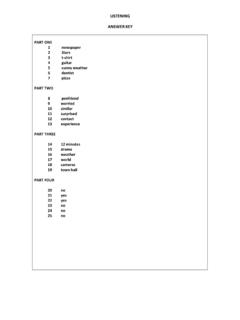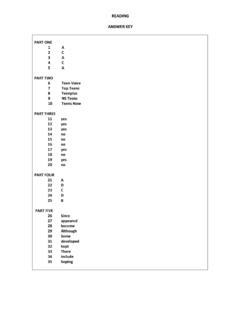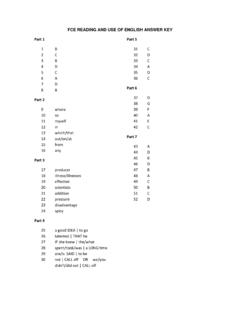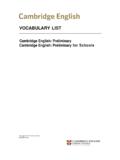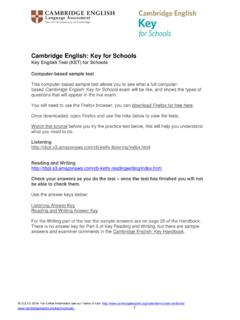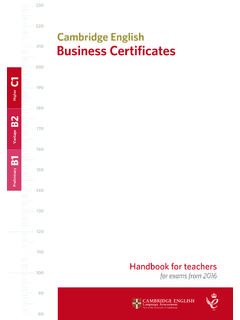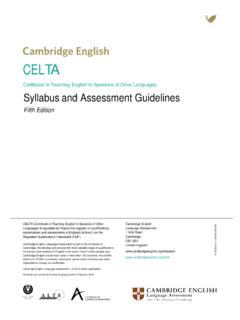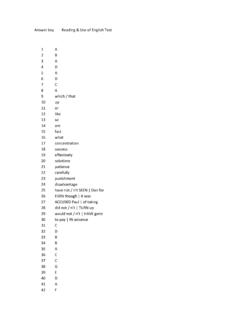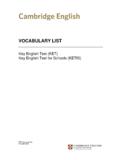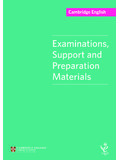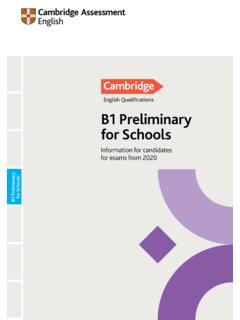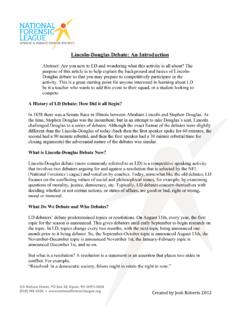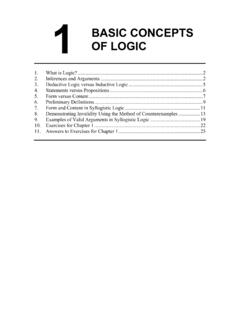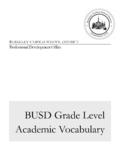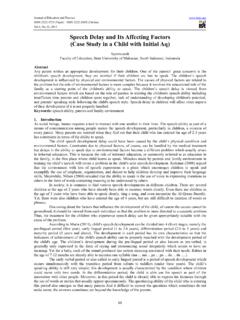Transcription of B1 Preliminary for Schools Reading Part 4
1 1 B1 Preliminary for Schools Reading part 4 Description This lesson plan has been created to help students prepare for B1 Preliminary for Schools Reading part 4. This lesson plan can be delivered face to face or online. The online options column gives teachers ideas how the stages could be adapted for teaching online. In this lesson learners are given opportunities to consider and discuss their understanding of the relationship between people, the natural world, and steps that can be taken to protect the environment. Learners explore, apply, and then reflect upon a series of strategies for successful completion of B1 Preliminary for Schools Reading part 4.
2 These involve skim Reading , intensive Reading and recognising features of a cohesive text. Time required: 60 minutes (can be extended or shortened as required) Materials required: Adapted version of B1 Preliminary for Schools Reading part 4, opening paragraph B1 Preliminary for Schools sample task (see below) Online collaborative tool (googledoc/Padlet) to record key learning points from the lesson Prepared presentation/PowerPoint slides Aims: To discuss environmental conservation and how it relates to their own lives To develop the skill of skimming a Reading text for important information To recognise features of a cohesive text To develop strategies for the B1 Preliminary for Schools Reading part 4.
3 Procedure Lesson Stages Online options Welcome students Ask learners to say hello to confirm they can see and hear you. Lead in Show learners a selection of images related to environment / climate change, ask them to consider: 1. What do they all have in common? (the topic) 2. Which could be the odd one out? Why? Learners in smaller classes may share ideas using their microphone and benefit from the speaking practice. 2 After giving individual thinking time, prompt learners to share and justify their answers. Note that there are no correct answers to this activity. The objective is for learners to consider and discuss the relationships between the images.
4 Suggested images: Allowing learners in larger classes to share ideas through the platform s chat function enables everyone to participate. You could use any images relating to the topic. Allow learners to individually consider the questions; What do Schools currently do to protect the environment? What else could Schools do to protect the environment? Allocate pairs and instruct learners to list as many ideas as possible for question 2 (within a time limit). Get feedback from pairs with fewest ideas first, then ask others to add any extras. Acknowledge particularly interesting, thoughtful and funny contributions in particular.
5 If possible, enable learners to share ideas in groups through online collaborative tools (for example, by creating googledocs for each group). Otherwise, guide learners to individually share their ideas using the platform s chat function. Preparing to skim Explain that learners will read a 250-word text about trees, written by Mark Rotheram. They must find out who Mark Rotheram is, and why he's writing about trees but they only have 30 seconds to read it. Before looking at the text, present learners with the following questions: Will you need understand every detail of the text?
6 (no) get a general understanding of the text? (yes) read every word of the text, slowly and carefully? (no) look at the title, the sentences at the start of paragraphs, and let your eyes move over the whole text, looking for frequently occurring words or themes? (yes) What do we call this Reading skill? (skimming) Allow learners to consider the questions individually before discussing them in pairs. Ask learners when they skim read in their first language. If you are able to safely manage breakout rooms, then consider grouping learners. Otherwise pose the questions one by one and guide learners to individually share their ideas with the platform s chat function.
7 Share a link to a collaborative tool (for example a googledoc or Padlet), and nominate a learner to summarise the main features of skim Reading on it. This forms a record of the lesson s key learning points. 3 Skim Reading Display text for 30 seconds as learners skim. Learners to share their answers and where they were found, in pairs. Teacher to elicit answers: Mark Rotheram is a 13-year-old pupil. Mark and his classmates planted trees as part of a green project at school suggested by his teacher. This information was found in the title opening sentences of each paragraph frequent references to planting trees throughout the text.
8 Clarify that when skimming, these are the areas where key information can often be found. Either display the text for a limited time using your platform s screen-share function or share it with them beforehand. Identifying features of a cohesive text Explain that the text is from Reading part 4 of the B1 Preliminary for Schools exam. Elicit what learners know about this paper. If necessary, clarify that in this task candidates have to complete a text. This demonstrates an understanding of how a well-structured, cohesive text is formed (which will also help their writing).
9 Focus learners on the following adapted version of the text: Instruct learners to consider the following questions in pairs: What is the topic? (conservation - tree planting) How do people in the text feel about planting trees? (positive, they think it's a good idea) What do you expect them to do next? (start planting trees - or something in support of that) Manage feedback. Ask learners to choose the best ending from the following options: a) however we started looking online for the best trees to buy. b) so we went to the cinema. c) so we started looking online for the best trees to buy.
10 Ask questions one by one, giving learners individual thinking time before prompting them to share answers with the platform s chat function. This allows everyone to actively participate. Nominate a learner to summarise the features of cohesive texts on the online record of the lesson s key learning points. 4 d) so we had started looking online for the best trees to buy. Ask pairs to share their answers, and reasons for rejecting the other options. Elicit answers from pairs. Clarify the following reasons for rejecting the incorrect options (a, b and d). Features of cohesive texts: a) Things mentioned in the text should be connected and referred to in a logical way (consistent use of pronouns and conjunctions).
